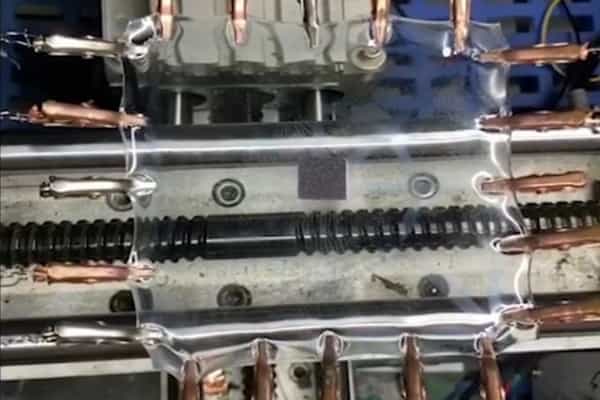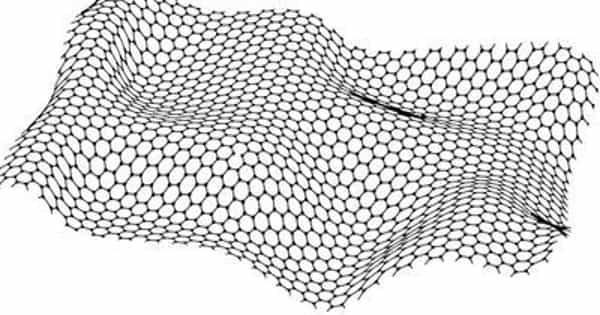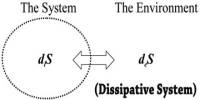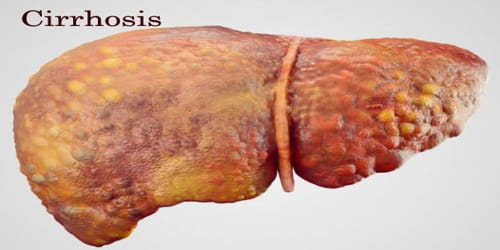Lithium-ion batteries and supercapacitors, for example, have become essential building blocks in modern society. Recently, progress in developing multifunctional energy-storage systems that can be bent, folded, crumpled, and stretched while maintaining electrochemical functions under deformation has been fueled by the emerging direction toward the ever-growing market of flexible and wearable electronics.
In wearable displays, biomedical applications, and soft robots, some electronics can bend, twist, and stretch. While the circuits of these devices have become more malleable, the batteries and supercapacitors that power them remain rigid. Researchers report in the journal ACS Nano Letters a flexible supercapacitor with electrodes made of wrinkled titanium carbide, a type of MXene nanomaterial, that retained its ability to store and release electronic charges after repeated stretching.
Extensive efforts have been made to develop matchable energy storage and conversion systems as power sources, such as flexible lithium-ion batteries (LIBs), supercapacitors (SCs), solar cells, fuel cells, and so on, to meet the rapid development of flexible, portable, and wearable electronic devices. Exciting work has been done in recent years to investigate more suitable and effective electrode/electrolyte materials, as well as more preferable cell configuration and structural designs, in order to develop flexible power sources with improved electrochemical performance for integration into flexible electronics.
Researchers report a flexible supercapacitor with electrodes made of wrinkled titanium carbide, a type of MXene nanomaterial, that maintained its ability to store and release electronic charges after repetitive stretching.
The stiff and inflexible nature of stretchable electronics’ energy storage components, batteries, and supercapacitors, is a major challenge. MXenes, which are supercapacitors that use electrodes made of transitional metal carbides, carbonitrides, or nitrides, have desirable electrical properties for portable flexible devices, such as rapid charging and discharging. When used in electrodes, the ability of 2D MXenes to form multi-layered nanosheets provides a large surface area for energy storage.
Previously, researchers had to incorporate polymers and other nanomaterials to keep these types of electrodes from breaking when bent, reducing their electrical storage capacity. Desheng Kong and colleagues wanted to see if deforming a pristine titanium carbide MXene film into accordion-like ridges would preserve the electrode’s electrical properties while increasing the flexibility and stretchability of a supercapacitor.

Active radio frequency identification tags, integrated circuit smart cards, and portable electronics are just a few of the applications for flexible energy storage devices. Because of their flexibility, they can be embedded in tiny and flexible electronic devices.
The researchers used hydrofluoric acid to disintegrate titanium aluminum carbide powder into flakes, then captured the layers of pure titanium carbide nanosheets as a roughly textured film on a filter. The film was then placed on a piece of pre-stretched acrylic elastomer that was 800% its relaxed size. When the polymer was released, it shrank back to its original size, and the adhered nanosheets crumpled into accordion-like wrinkles.
In preliminary tests, the team discovered that the best electrode was made from a 3 m-thick film that could be repeatedly stretched and relaxed without being damaged or affecting its ability to store an electrical charge. This material was used to make a supercapacitor by sandwiching a polyvinyl (alcohol)-sulfuric acid gel electrolyte between two stretchable titanium carbide electrodes.
The device had a high energy capacity comparable to other researchers’ MXene-based supercapacitors, but it also had extreme stretchability up to 800 percent without the nanosheets cracking. After being stretched 1,000 times or bent or twisted, it retained approximately 90% of its energy storage capacity. According to the researchers, the excellent energy storage and electrical stability of their supercapacitor make it appealing for stretchable energy storage devices and wearable electronic systems.
The authors gratefully acknowledge funding from the Jiangsu Provincial Department of Science and Technology of China’s Key Research and Development Program, the China Postdoctoral Science Foundation, and the Jiangsu Province’s High-Level Entrepreneurial and Innovative Talents Program.
The number and variety of electronic devices have increased dramatically in the last five years, and there is currently a growing interest in electronic devices with flexible, thin, and large-area form factors. Mobile devices, healthcare, smart surfaces, smart packaging, and wearables such as smartwatches and e-textiles are just a few of the applications for these electronics. All of these diverse applications necessitate the use of electrical power, and many of them, particularly wireless communication and light-emitting devices, necessitate relatively large current pulses on the order of many milliamps.
















